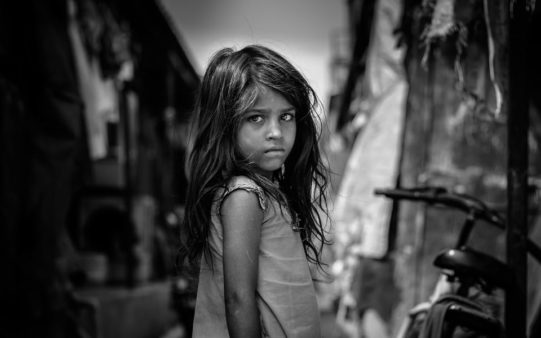Missing, Presumed . . .
Author: Maile Meloy
In a world where the biggest concern is what the cruise buffet is serving – where lost children only mean they’re wandering around an expensive luxury boat – the unthinkable happens. Cousins Liv and Nora plan the perfect vacation – time away from the stress of meal planning and the stultifying, successful upper middle class life to somewhere exotic. A trip in style with that deliciously artificial cadence of no responsibilities. When the boat docks in the wilds of an unnamed country reminiscent of Costa Rica, however, the fake low-key cruise world shimmers into the distance. The husbands split off for an evening of manly golf and Liv and Nora, joined by an affluent Argentinian mom, scuttle their three sets of siblings into a taxi and start off for a humid afternoon of zip lining and monkey sighting. A blown tire, a flirtatious young tour guide, an abandoned beach, ostensible “bird watching” and cocktails under a blazing noon sun soon settle the moms into a dreamy ease while the kids play in the waves. And that’s when happenstance and a casual assurance of safety leads to six children, ranging in ages from toddler to blooming adolescent, are hopelessly lost in the current. From here, the tale rapidly accelerates as the children confront the dangers of animal life and eventually the ruthless empire of a drug dealer, all while the parents panic, attempting to move international barriers while realizing that their influence and privilege mean nothing here.
Fast paced, brutal, riveting and realistic, Do Not Become Alarmed switches between the viewpoints of each of the six parents and children. The parents: helpless, blaming one another, protecting secrets, watching their marriages disintegrate, yelling at government officials and baffled detectives. Meanwhile, the children, at the mercy of a drug dealer and his psychotic brother, face their own internal squabbles and poor choices. Even still, they ultimately fare better than the eroding adults do.
 This then is a story of living in a bubble and the terrible, senseless cacophony that occurs when that bubble bursts. It’s a story of survival and scars, with a breathtaking range of fast paced motion and edge-of-the-seat sequences that nevertheless, stay eerily realistic. It’s by no means an easy novel to read, especially for parents, as Meloy peels back the layers of civilization and false security, all the while remaining both non-judgmental and oddly sympathetic to all of her characters, even the seeming villains of the piece. Meloy shows us that we live on a precipice that could crumble without warning, the chaos that churns below seemingly smooth waves, the odd power of choices and the meaningless, detached nature of cause and effect. Weave in her plain yet emotional writing, a searing simplicity that captures characters and situations with burning clarity, and you have a story that is gut wrenching.
This then is a story of living in a bubble and the terrible, senseless cacophony that occurs when that bubble bursts. It’s a story of survival and scars, with a breathtaking range of fast paced motion and edge-of-the-seat sequences that nevertheless, stay eerily realistic. It’s by no means an easy novel to read, especially for parents, as Meloy peels back the layers of civilization and false security, all the while remaining both non-judgmental and oddly sympathetic to all of her characters, even the seeming villains of the piece. Meloy shows us that we live on a precipice that could crumble without warning, the chaos that churns below seemingly smooth waves, the odd power of choices and the meaningless, detached nature of cause and effect. Weave in her plain yet emotional writing, a searing simplicity that captures characters and situations with burning clarity, and you have a story that is gut wrenching.
What’s difficult here – more so than some of the brutal murders – is the vast cast of characters. We have six parents, three sets of couples. While the Argentinian couple mainly exists in the backdrop, Liv and Nora and their husbands are upfront, their relationships both romantic and friendly coming under strong inspection as they discover their powerlessness alongside their failures as parents. These interconnected tendrils make up the backbone of the parents’ story as connections, seemingly strong, fray. We have the complications of marriages, good on the surface, which are somehow, inexplicably, inadequate. Then there are the duties of covering for friends, for spouses, alongside waves of anger leading into a compulsive need to lay blame and therefore a proven reason for a random, vicious event. The parents all struggle with guilt, with remorse, and with the idea that, as time passes, their children are likely dead and buried in unmarked graves or worse – taken into human trafficking. Soon, each imagined fate becomes worse than the last.
Meanwhile, the dynamics of the children are even more complicated. The children are difficult to separate, the rapid introductions complete with brief backgrounds fading as their nearness in age blends and circumstances first lump them together, then separate them. It’s harder to see them as individuals and the necessity of plot, plus the fact that there are even more characters to come including a girl and her coyote brother, the drug dealer’s wary household of sympathetic servants, and the dealers themselves, makes the children difficult to track. It’s the type of book with such a grand cast that you’re always paging backwards, trying to remember the separating details and, even more importantly, which pair of children belongs to which set of parents. Only two of the children truly stand out: the little boy in need of insulin and the older, teen daughter who attracts a different sort of danger. Despite the difficulty of keeping all the characters straight, however, the strength of the depicted emotions and the realism keeps the novel tight, functioning, and impelling us to continue reading even though we dread the results. It’s evident that no easy ending is in store.
 As the novel continues and the cast grows, we encounter more fearful denizens of a corrupt country, torn between a desire to help the children and the knowledge that doing so will not only cost them their lives, but the lives of their families. This is where the two drug dealers have their own dialogue. The one is merely brutal, the caricature of evil you would expect – crazy, uninterested in necessary cover ups, bored, and cruel. But then there is the other brother – no stranger to murder and bad deals and the other unpleasant necessities of ruling a drug empire. Yet, he is no caricature. Instead, this is a complicated man who both feels for the children and yet protects himself. Here then is a memorable character, a further additional layer to the real world complications Meloy so effortlessly evokes.
As the novel continues and the cast grows, we encounter more fearful denizens of a corrupt country, torn between a desire to help the children and the knowledge that doing so will not only cost them their lives, but the lives of their families. This is where the two drug dealers have their own dialogue. The one is merely brutal, the caricature of evil you would expect – crazy, uninterested in necessary cover ups, bored, and cruel. But then there is the other brother – no stranger to murder and bad deals and the other unpleasant necessities of ruling a drug empire. Yet, he is no caricature. Instead, this is a complicated man who both feels for the children and yet protects himself. Here then is a memorable character, a further additional layer to the real world complications Meloy so effortlessly evokes.
As the story progresses, Meloy avoids the easy moralizations that could come from such a tale. Instead, she delves deeper into the seemingly random nature of disaster and while there are moments for judgement of all the parents, and even of the American middle to upper class life, she chooses instead to focus on the liminal nature of relationships and the indelible scars left from confronting true tragedy and then having to move onward, to pick up the pieces and once again believe in the fakeness of everyday life. We have a brief after-the-disaster moment to see the remaining survivors: how they have either changed or, in some cases, not. How children bear the scars of their history as do adults. How in the blink of an eye, everything known, everything trusted, can suddenly evaporate. Entwined with a breathless telling, an unstoppable sequence of events, spur of the moment decisions with lasting effects, and the terror of being swept away, the most important, prevailing element grabs us by the throat and shakes us into uncomfortable wakefulness: the tragedy of chance.
– Frances Carden
Follow my reviews on Twitter at: https://twitter.com/xombie_mistress
Follow my reviews on Facebook at: https://www.facebook.com/FrancesReviews/
[AMAZONPRODUCTS asin=”0735216533″]
- Book Vs Movie: The Shining - April 6, 2020
- Thankful For Great Cozy Mysteries - December 13, 2019
- Cozy Mysteries for a Perfect Fall - October 20, 2019


